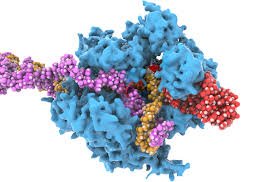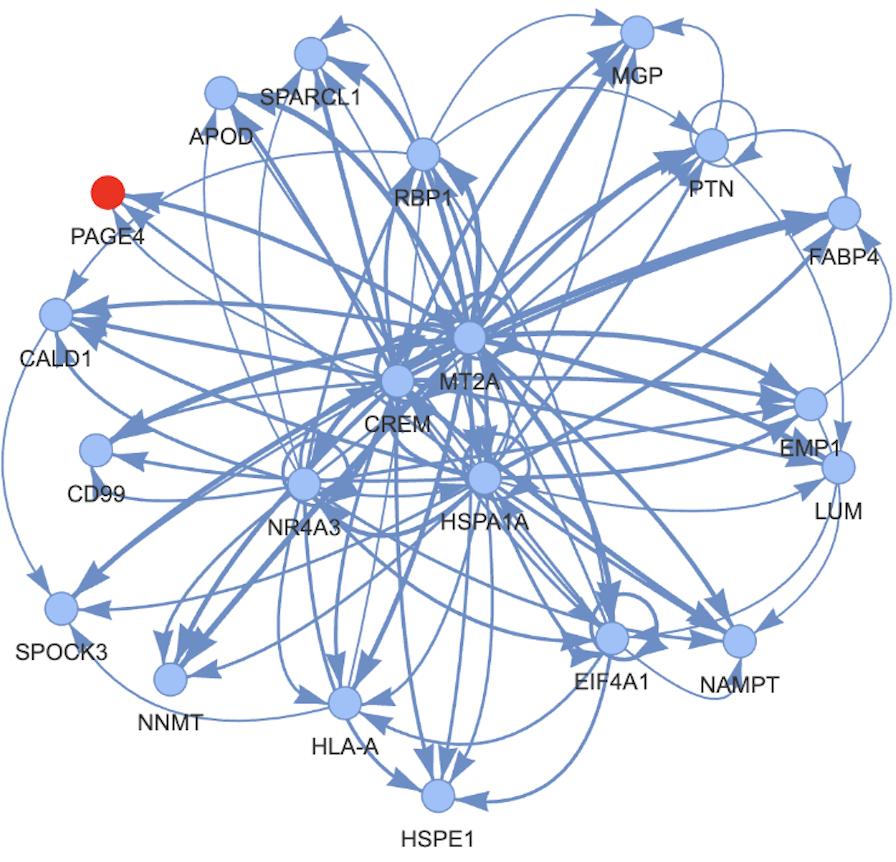Revolutionizing Medical Care
The world of medicine is constantly evolving, with new research and advancements being made every day. In order to provide the best possible care to patients, it is crucial for healthcare professionals to stay updated on the latest standards of care. What if we could harness the power of technology to create a web platform that empowers doctors to view and edit an open knowledge base, utilizing a decision tree approach to streamline the diagnostic process and treatment planning? This article explores the potential of such a platform and its impact on the healthcare industry.
An Open Knowledge Base:
The proposed web platform envisions an open knowledge base, inspired by the collaborative editing system of platforms like Wikipedia. This knowledge base would house a comprehensive repository of medical information, research findings, and treatment guidelines. To ensure accuracy and reliability, the platform would implement a rigorous policy for contributors, similar to peer-reviewed journals in the medical field.
Collaborative Editing System:
Taking a cue from successful collaborative platforms like Wikipedia, the web platform would adopt a similar editing system. Medical professionals from around the globe would have the ability to contribute, update, and refine the information within the knowledge base. Through a transparent and collaborative process, the platform would benefit from the collective expertise of doctors worldwide, ensuring that the information remains accurate, reliable, and up-to-date.
Rigorous Contributor Policy:
To maintain the integrity and quality of the knowledge base, the platform would enforce a rigorous contributor policy. Medical professionals who wish to contribute would need to meet certain criteria, such as being licensed practitioners, having relevant expertise, or providing verifiable research contributions. This policy would help filter out misinformation, speculative content, or biased viewpoints, ensuring that the information within the knowledge base is trustworthy and backed by reliable sources.
Integration of Patient Information:
To enhance the diagnostic process, the web platform would leverage patient information, including medical history, previous visits to other care providers, and geographic location. By integrating these details into the decision tree approach, doctors would have a more comprehensive understanding of each patient’s case. This integration would enable personalized treatment plans, taking into account individual variations, local healthcare practices, and patient preferences.
Statistical Data and Testing Options:
The knowledge base within the platform would incorporate relevant statistics for each disease, presenting doctors with valuable insights into prevalence rates, risk factors, and treatment outcomes. These statistical data points would aid in the diagnostic process, allowing physicians to assess the likelihood of certain conditions based on patient-specific factors. Additionally, the platform would provide comprehensive information on testing options, including their accuracy, availability, and recommended usage, empowering doctors to make informed decisions.
Continuous Validation and Review:
Similar to peer-reviewed journals, the platform would implement a continuous validation and review process for the information within the knowledge base. Contributions and updates made by doctors would undergo a rigorous verification process, involving peer review from subject matter experts. This robust system would ensure that the information remains accurate, evidence-based, and aligned with the latest medical research and guidelines.
By combining the collaborative editing system of platforms like Wikipedia, rigorous contributor policies, integration of patient information, statistical data, and testing options, the web platform’s open knowledge base would become a comprehensive and reliable resource for medical professionals. It would facilitate enhanced diagnostic accuracy, personalized treatment plans, and informed decision-making, ultimately leading to improved patient outcomes and advancing the field of medicine as a whole.
Decision Tree Approach:
The proposed web platform would leverage a decision tree framework to provide doctors with a systematic and structured approach for diagnosing patients and devising treatment plans. This decision tree would be designed to break down complex medical scenarios into a series of logical steps, empowering physicians to make informed decisions based on a range of factors, including symptoms, medical history, test results, and relevant literature.
Feeding from Literature:
The decision tree within the platform would be continuously updated with the latest medical literature, research findings, and clinical guidelines. By incorporating evidence-based information from reputable sources, the decision tree would reflect the current state of medical knowledge. This integration would help doctors stay abreast of emerging research, novel diagnostic approaches, and treatment modalities, ensuring that their decision-making process aligns with the most up-to-date standards of care.
Parsing the Decision Tree:
One of the advantages of utilizing a decision tree framework is the ability to extract valuable insights by analyzing the structure and outcomes of the tree. The platform would be equipped with sophisticated algorithms that can parse the decision tree to identify patterns, correlations, and decision points that lead to the most accurate diagnoses and effective treatment plans. This analysis would provide valuable feedback to refine and optimize the decision tree, making it increasingly effective over time.
Optimal Test Sequencing:
In complex medical cases, doctors often face the challenge of deciding which tests to conduct and in what order. The decision tree within the platform would assist doctors in determining the optimal sequencing of tests by considering various factors such as the urgency of the situation, cost-effectiveness, and diagnostic efficiency. By intelligently guiding physicians through the testing process, the decision tree would streamline the diagnostic journey, potentially reducing the need for unnecessary or redundant tests, and expediting the time to diagnosis.
Time-Constrained Tests:
In certain medical scenarios, time plays a critical role in making accurate diagnoses and initiating timely treatment. The decision tree within the platform would take into account time constraints and provide doctors with recommendations for specific tests or interventions that can be performed promptly. By factoring in the urgency of the situation, the decision tree would help prioritize certain diagnostic measures, ensuring that potentially life-threatening conditions are promptly identified and managed.
By integrating literature, leveraging parsing techniques, optimizing test sequencing, and considering time constraints, the decision tree approach within the web platform would empower doctors to navigate complex medical scenarios with greater efficiency and accuracy. It would provide a structured framework that guides physicians through the diagnostic process, ensuring comprehensive consideration of relevant factors and aiding in the development of personalized treatment plans. Ultimately, this approach would contribute to improved patient outcomes, reduced healthcare costs, and the advancement of medical knowledge.
Building the Company
To embark on the journey of building this innovative web platform for medical decision-making, the following steps can be considered:
Identify the Core Team:
Start by assembling a core team of professionals who possess the necessary expertise and passion for the project. This team should ideally include primary care physicians (PCPs) who can provide valuable insights into the needs and challenges faced by doctors on the front lines of patient care. Additionally, recruit UI/UX developers and web development software engineers who have experience working on community projects and understand the importance of user-centered design.
Develop a Minimum Viable Product (MVP):
Focus on developing an MVP that showcases the core functionalities of the web platform. The MVP should demonstrate the decision tree framework, the open knowledge base, and the integration of patient information. It should be designed to provide a seamless and intuitive user experience. By starting with a functional MVP, the company can gather feedback from early users, refine the platform, and validate its potential value in the medical community.
Collaborate with Medical Professionals and Institutions:
Engage and collaborate with medical professionals and institutions to gain their support and involvement. Seek partnerships with PCPs and specialized healthcare providers to gather their insights, involve them in the decision tree development process, and encourage their active participation in contributing to the open knowledge base. By forging these collaborations, the platform can benefit from the expertise of a wide range of medical professionals and ensure that it caters to diverse healthcare needs.
Secure Funding and Industry Support:
Seek financial support from investors, venture capitalists, and related companies with an interest in healthcare technology. Present a compelling business case that highlights the potential impact of the platform on patient care, healthcare efficiency, and medical research. Additionally, explore partnerships with pharmaceutical companies, medical device manufacturers, and healthcare organizations that share a common interest in advancing medical knowledge and improving patient outcomes.
Ensure Regulatory Compliance and Data Security:
In the healthcare industry, regulatory compliance and data security are paramount. Ensure that the platform adheres to applicable healthcare regulations, such as HIPAA (Health Insurance Portability and Accountability Act) in the United States or similar data protection laws in other regions. Implement robust security measures to safeguard patient data, maintain confidentiality, and protect against unauthorized access.
Ideas for Improvement:
- Integration of Artificial Intelligence (AI): consider leveraging AI technologies, such as machine learning and natural language processing, to enhance the platform’s capabilities. AI algorithms can assist in parsing medical literature, automating data analysis, and providing personalized recommendations based on patient-specific information. This integration can further streamline the diagnostic process and improve the accuracy of treatment plans.
- Collaboration with Medical Research Institutions:Forge partnerships with medical research institutions to access their vast repositories of research data and clinical trials. Collaborative research projects can yield valuable insights, validate the platform’s effectiveness, and contribute to evidence-based decision-making within the platform.
- Patient Engagement and Education: Expand the platform’s scope to include patient engagement and education features. Providing patients with access to relevant information, treatment explanations, and shared decision-making tools can empower them to actively participate in their healthcare journey. This patient-centric approach can improve patient satisfaction, adherence to treatment plans, and overall health outcomes.
Improved Accuracy and Efficiency:
The integration of an open knowledge base and a decision tree approach within the web platform holds immense potential to enhance the accuracy and efficiency of medical diagnoses and treatment plans. Here’s how:
Access to Up-to-Date Information:
By leveraging the open knowledge base, doctors would have access to a vast repository of current medical information, research findings, and treatment guidelines. This wealth of up-to-date knowledge would help doctors stay informed about the latest advancements in their field, reducing the risk of relying on outdated or incomplete information. Access to comprehensive and reliable data would enable physicians to make more accurate diagnoses and formulate effective treatment plans.
Streamlined Decision-Making Process:
The decision tree approach would provide a systematic and logical framework for doctors to follow when navigating complex medical scenarios. By breaking down the diagnostic process into a series of steps, the decision tree guides physicians to consider various factors, such as symptoms, medical history, and test results, leading to a more efficient decision-making process. This systematic approach minimizes the likelihood of overlooking critical details, ensuring thorough and comprehensive evaluations.
Collaboration and Peer Insights:
The web platform’s collaborative nature would empower medical professionals by promoting knowledge sharing and collaborative decision-making. Doctors would have the opportunity to learn from the experiences and expertise of their peers, engaging in discussions, and exchanging insights. This collective intelligence fosters a culture of continuous learning and improvement, enhancing the accuracy and quality of diagnoses and treatment plans.
The profound impact of the web platform extends beyond individual patients. By improving the accuracy and efficiency of medical decision-making, it has the potential to positively impact healthcare systems on a larger scale. By reducing misdiagnoses, unnecessary tests, and delays in treatment, the platform can help optimize healthcare resource utilization and improve patient outcomes globally.
By empowering medical professionals, promoting collaboration, and harnessing the power of collective intelligence, the platform has the potential to revolutionize healthcare, benefiting humanity on a substantial scale.




Leave a comment